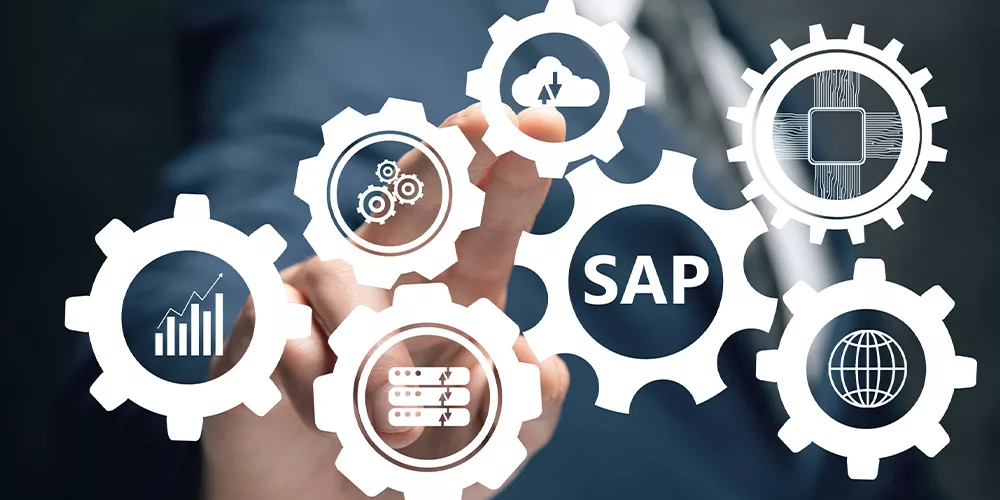
Making the Cloud Move with SAP S/4HANA
In early 2018, SAP declared that businesses using SAP ERP should prepare to move to S/4HANA by 2025. Since then, SAP has revised the date to accommodate for enterprises struggling with slower adoption. As it stands, SAP now envisions to end support for legacy ERP systems in 2027. In essence, this stresses the urgency of migrating to SAP S/4HANA for businesses that haven’t done so already.
Most pre-cloud era legacy ERP systems are already outdated and do not facilitate the desired usage of modern intelligent technologies for competitive advantage. In that light, moving to SAP S/4HANA is not just an opportunity to start afresh but also to update business processes like EDI (electronic data interchange).
What Is SAP S/4HANA Cloud?
SAP S/4HANA is the SaaS (software-as-a-service) version of the world’s most popular ERP system. It comprises an integrated business applications suite that allows proper planning and utilization of the company’s resources according to requirements. The suite is available with SAP S/4HANA Cloud in the form of a cloud-based ERP application.
Introduced in February 2015, S/4HANA can help users digitally connect various functional areas and departments, digitize the business processes, and quickly respond to innovative growth trends.
SAP S/4HANA Cloud runs on the SAP HANA database (in memory). The high-performance analysis program now utilizes AI, among several other technologies, to analyze bulk data and amplify the utility of the solution even further.
Reasons to Migrate to SAP S/4HANA Cloud
With several thousands of users worldwide moving toward an intelligent ERP, SAP would likely already be an indispensable part of any business. To benefit from the new technology age, enterprises should undertake some necessary steps involving:
- Prototyping and mapping critical processes for migration
- Analyzing the system and customization
- Adapting the legacy apps incompatible with S/4HANA
Noted below are the top reasons to migrate to the SAP S/4HANA cloud:
Enhanced Business Value
SAP S/4HANA opens new avenues to futuristic innovations, such as SAP Fiori, real-time analytics, improved performance, faster response time, etc. With several new features, seamless functionality, and customization, it can enhance business value.
Stronger Growth Strategy
Whether you are migrating to expand business or otherwise, a well-planned growth strategy is necessary. SAP S/4HANA strengthens the strategy and assists enterprises in exploring and tapping into new markets. In essence, businesses can establish new production facilities and warehouses that can thrive and adapt and use actionable insights to make informed decisions.
Investment of the Future
Transitioning to SAP S/4HANA equips the business to take on the upcoming trends and new challenges. The ever-changing enterprise needs are easily fulfilled using advanced cloud-based solutions. SAP is also investing in its ERP module to ensure user-friendliness and flawless performance.
Connecting the Dots
SAP releases new solutions every quarter to make the system more intelligent and secure while addressing glitches and bugs. It connects the dots between the present business model and the customer expectations. Leveraging SAP S/4HANA, organizations can meet these changing requirements to deliver desired solutions to their customers.
Leveraging Resources
SAP S/4HANA is an advanced solution that positively impacts different departments and segments of the enterprise. Businesses can plan projects and execute them efficiently through proper coordination across various departments like sales, marketing, finance, accounts, and inventory. Further, this cloud-based solution enables enterprises to use available resources efficiently and fetch higher ROI.
Common Pitfalls
A recent cloud computing study by Foundry shows that the share of companies with most or all IT infrastructure in the cloud will grow from 41% today to 63% in 18 months. That’s just one of the many enablers of the SAP cloud decision.
However, anything new has challenges and pitfalls. Businesses should aim to overcome those pitfalls and adapt to the latest technology seamlessly. Noted below are the three major obstacles that prevent enterprises from taking the big leap:
Cloud Concerns
SAP S/4HANA has a SaaS version, which is deployed in a single or multitenant cloud. Undoubtedly, SAP remains the undisputed ERP solution leader. However, enterprises leveraging multiple clouds are often concerned about latency and connectivity between dependent SAP-managed cloud against dependent solutions that run on Azure or AWS.
Moreover, there are concerns about control and security. In SAP Cloud, vendors maintain control over new releases, and updates are implemented. This raises concerns for businesses having non-SAP business systems integrated into the ERP backbone.
Lack of Resources & Talent
SAP S/4HANA can be deployed in a hyper-scale cloud environment such as AWS or a proprietary cloud. Nevertheless, these sophisticated options demand an enterprise to have an application, environment expertise, and user experience. IT team skilled in these areas is difficult to find, especially for re-architected ERP systems.
Businesses move to the cloud to eliminate costs like hardware investments, staff expenses, and facility maintenance. Streamlining these facilities is often a challenge as is planning and managing a seamless migration.
Migration Best Practices
Greenfield Approach
Greenfield means starting on fresh land that was not used for construction previously. Specifically for S/4HANA, it means migrating only data or not migrating any data at all. The legacy customizations retire, and the process is streamlined.
Complete Migration
The process involves fully converting the existing SAP system into S/4HANA, also called “lift-and-shift.” This involves utilizing SAP Software Update Manager with database migration for enterprises not using the SAP HANA database. For application customization, a business can utilize SAP Cloud or even SAP partner development tools.
Hybrid Migration
Enterprises should analyze their existing SAP system to identify customized applications, interfaces, and functionalities not included in the core. Before migrating, businesses can use a low-code platform for developing non-vanilla applications and pieces. By preparing in advance, the SAP core remains clean and easier to migrate.
Getting SAP S/4HANA Migration Right
System migrations open new opportunities to drive businesses ahead, facilitate innovation, and become the strategic force for an enterprise. Collaborate with A5E Consulting to start migrating on the right note to deliver real business results.

